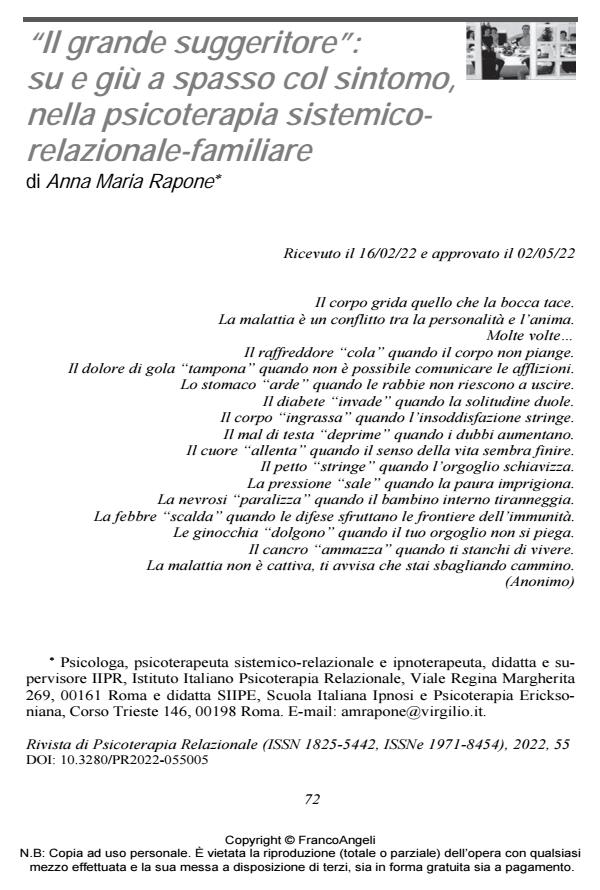"The Great Prompter": walking up and down with the symptom, in sistemi-relational-family psychotherapy
Journal title RIVISTA DI PSICOTERAPIA RELAZIONALE
Author/s Anna Maria Rapone
Publishing Year 2022 Issue 2022/55
Language Italian Pages 26 P. 72-97 File size 236 KB
DOI 10.3280/PR2022-055005
DOI is like a bar code for intellectual property: to have more infomation
click here
Below, you can see the article first page
If you want to buy this article in PDF format, you can do it, following the instructions to buy download credits

FrancoAngeli is member of Publishers International Linking Association, Inc (PILA), a not-for-profit association which run the CrossRef service enabling links to and from online scholarly content.
The Author, with the double training as systemic-relational psycho-therapist and ericksonian hypnotherapist, presents a work on the meaning of the symptom in psychotherapy, deriving from some reflections that emerged following her clinical experience. Even if the symptom is usually seen only as a problem to be elimi-nated definitively and quickly, this article highlights the "value" of the symptom as a help and ally for the clinician, a "prompter" able to indicate the way and the steps towards healing. Through the presenta-tion of some clinical cases, the author aims to exemplify the key points of the Systemic Relational Model (with the individual, the couple and the family) and the use of the symptom in the psychotherapeutic pro-cess.
Keywords: Change, scapegoat, life cycle, context, diagnosis, hypno-sis, kintsugi, metaphor, passage, designated patient, problem solving, systemic-relational psychotherapy, resilience, setting, symptom, prompter, secondary advantage.
Anna Maria Rapone, "Il grande suggeritore": su e giù a spasso col sintomo, nella psicoterapia sistemicorelazionale- familiare in "RIVISTA DI PSICOTERAPIA RELAZIONALE " 55/2022, pp 72-97, DOI: 10.3280/PR2022-055005